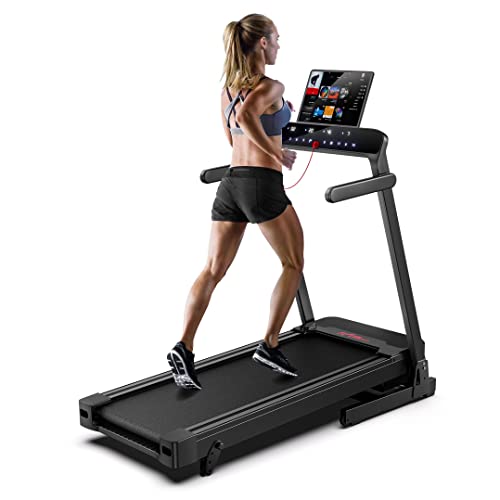Treadmills: A Comprehensive Guide to Understanding Their Functionality, Benefits, and Appropriate Selection
Intro
Treadmills have ended up being a staple in contemporary physical fitness routines, both in homes and health clubs worldwide. They offer a convenient and effective method to preserve cardiovascular health, increase endurance, and help in weight management. This short article checks out the various types of treadmills, their advantages, features to consider when buying, and some FAQs to guide users in making informed choices.
Kinds of Treadmills
When it comes to choosing a treadmill, it is essential to comprehend the different types available in the market. Here are the main classifications:
1. Handbook Treadmills
- System: These treadmills have an easy style and count on the user's efforts to move the belt.
- Pros: More budget friendly, quieter operation, no electricity required.
- Cons: Limited functions, may not supply the very same series of exercise intensity.
2. Motorized Treadmills
- System: Powered by a motor that drives the belt, enabling users to stroll or run at a set pace.
- Pros: Greater range of speeds and slopes, geared up with numerous functions such as heart rate displays and exercise programs.
- Cons: More pricey and might need more upkeep.
3. Folding Treadmills
- System: Designed for those with limited area, these treadmills can be folded for easy storage.
- Pros: Space-saving, frequently motorized, flexible functions.
- Cons: May be less long lasting than non-folding designs.
4. Commercial Treadmills
- System: High-quality machines created for use in fitness centers and physical fitness centers.
- Pros: Built to hold up against heavy usage, advanced features, frequently consist of warranties.
- Cons: Pricey and not ideal for home usage due to size.
5. Curved Treadmills
- Mechanism: A special style that enables users to move the belt using their own energy.
- Pros: Offers a more natural running experience, promotes much better running form.
- Cons: More costly and can be noisier.
| Treadmill Type | Pros | Cons |
|---|---|---|
| Handbook | Inexpensive, no electrical power required | Limited features |
| Motorized | Variety of speeds, advanced features | Maintenance needed |
| Folding | Space-saving, often motorized | May do not have resilience |
| Commercial | Developed to last, professional-grade features | Expensive |
| Curved | Natural running experience, promotes excellent type | Higher rate |
Benefits of Using Treadmills
Treadmills provide various advantages that can contribute to one's general health and wellness objectives. Some of these benefits consist of:
- Convenient Workouts: Treadmills enable users to work out inside your home no matter climate condition.
- Cardiovascular Health: Regular usage can improve heart health by increasing stamina and promoting healthy flow.
- Weight Management: Effective for burning calories, which aids in weight reduction and management.
- Customizable Workouts: Users can control speed, slope, and period to create personalized exercise experiences.
- Safety: Treadmills provide a foreseeable surface area, minimizing the threat of falls compared to outside running.
- Multifunctional: Many treadmills included functions like heart rate monitors, exercise programs, and even home entertainment systems.
Selecting the Right Treadmill
When selecting a treadmill, prospective buyers need to think about several essential elements:
Features to Consider:
- Motor Power: Typically measured in horsepower (HP), a motor strength of at least 2.5 HP is recommended for severe runners.
- Belt Size: A longer and larger belt accommodates various stride lengths, supplying comfort throughout exercises.
- Incline Settings: Adjustable incline features mimic outdoor hill running and can increase exercise strength.
- Weight Capacity: Ensure the treadmill can support the user's weight for security and longevity.
- Console Features: Look for easy to use control panels, workout programs, and Bluetooth compatibility for streaming music or other functions.
Budget plan Considerations
- Under ₤ 500: Entry-level manual treadmills suitable for casual walkers.
- ₤ 500 - ₤ 1,500: Mid-range motorized treadmills that provide more features and better toughness.
- ₤ 1,500 - ₤ 3,000: High-end models with innovative technology, bigger motors, and longer warranties.
- Over ₤ 3,000: Commercial-grade treadmills perfect for regular use in health clubs or training facilities.
Regularly Asked Questions (FAQs)
1. How typically should I utilize a treadmill?
It is advised to use a treadmill a minimum of 3 to five times a week, incorporating different strength levels for best results.
2. Can Reginald Catanach slim down by utilizing a treadmill?
Yes, consistent use of a treadmill can contribute to weight loss, particularly when integrated with a well balanced diet plan and strength training.
3. What is the best speed to stroll on a treadmill for novices?
A speed of 3 to 4 miles per hour is an ideal variety for novices. It's important to begin sluggish and slowly increase speed as convenience and endurance improve.
4. Do I need to use a treadmill if I already run outdoors?
Utilizing a treadmill can provide fringe benefits, such as controlled environments and varied workouts (slope, periods) that are not constantly possible outdoors.
5. How do I maintain my treadmill?
Routine maintenance consists of lubricating the belt, cleaning up the deck and console, and examining the motor for optimum performance.
Treadmills are necessary tools for those seeking to enhance their physical fitness levels in a controlled and hassle-free way. With different types available, understanding their features and benefits is important for making an informed purchase. By thinking about individual workout requirements, space schedule, and budget restrictions, people can discover the most ideal treadmill that fits their lifestyle. Incorporating treadmill workouts into a well balanced fitness routine can cause improved health outcomes and an enjoyable workout experience.

